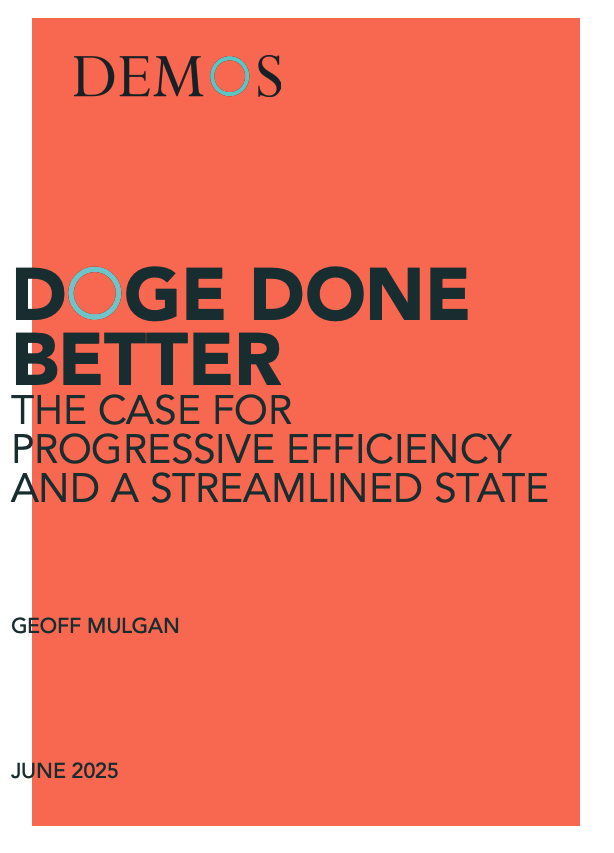Across the world, governments are under pressure to cut costs, streamline bureaucracy, and “do more with less”. But what often passes for reform—particularly under populist banners like DOGE (the US Department of Government Efficiency)—delivers little more than symbolic politics. DOGE Done Better, a new paper written by TIAL’s Geoff Mulgan and published by Demos (UK), offers an alternative: a model for redesigning government that balances efficiency with intelligence, legitimacy, and long-term purpose.
The paper calls for the progressive reclaiming of efficiency, not as a technocratic exercise or a cover for austerity, but as a design challenge in building institutions that are agile, trusted, and better at solving problems. Rather than cutting for its own sake, it asks: what if we built governments that waste less, and do more?
What could “progressive efficiency” look like?
Efficiency has often been framed as a conservative concern—about reducing the size of the state. But this is a misreading. Done well, efficiency could be foundational to progressive goals. If institutions become rigid, bloated, or opaque, it is the most vulnerable who pay the price. A truly efficient government is one that channels its resources wisely—towards prevention, inclusion, and long-term resilience.
Despite DOGE’s dismantling, this publication emerges at a critical time. Populist efforts like DOGE have claimed the reform agenda with bold rhetoric but little impact.
But efficiency is not only a conceptual argument. It’s also about method.
MOVE: The Ministry of Value and Efficiency
The paper outlines a practical alternative to DOGE: the Ministry of Value and Efficiency (MOVE). Rather than functioning as a blunt instrument of budget control, MOVE would act as a dynamic centre of intelligence and experimentation, embedded across the system but empowered to question, reallocate, and redesign.

“There are many options for its name, some in the spirit of DOGE: WAVE (Waste and Value Executive); MOVE (Ministry of Value and Efficiency); Team-E; SWAN (Strategic Waste Action Network, signalling a calm face and furious activity below the surface); or DRIVE (the Department for Reform, Innovation, Value and Efficiency). The label matters less than the content, for the purpose of this paper we refer to MOVE.”
Sir Geoff Mulgan, DOGE Done Better
In terms of design:
- It should be anchored in the centre of the administration, with the direct authority of the Prime Minister and Minister of Finance, or, in a city, that of the Mayor.
- It should bring in outsiders primarily from business to challenge internal orthodoxies. A good formula is to have half the staff made up of outsiders with experience of driving efficiencies and half insiders who understand how the public sector works. DOGE suffered from a dearth of deep insider knowledge.
- The team or department should have one foot inside the formal hierarchies and one foot outside, and this should be reflected in its physical location and its culture.
- The team should see their job as the opposite of a permanent department and more like a guerrilla army – fast, agile, provocative, spotting patterns that aren’t visible to incumbents and generating new options rather than making decisions.
- It should deliberately cultivate networks of allies across the system – some with formal titles, others linked informally.
The promise of institutional design
MOVE is only one imaginary institution that could drive lasting change on government efficiency. What else can we imagine?
This paper was published on Demos (UK) and can be accessed here. Demos focuses on democratic renewal, public service reform and digital rights.

